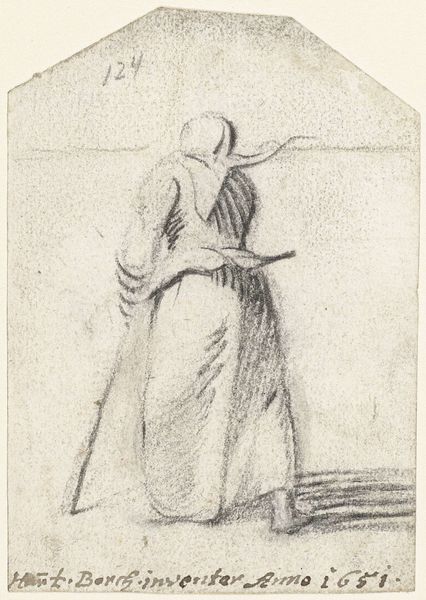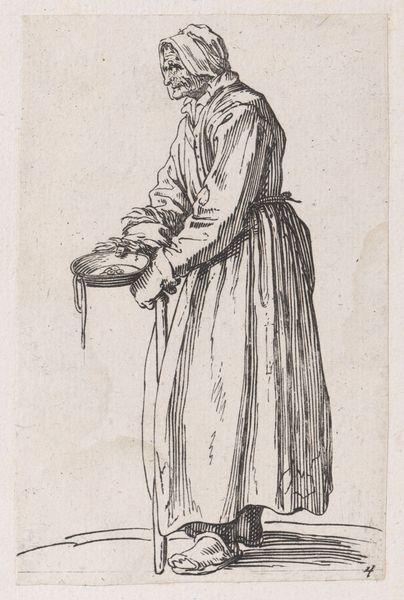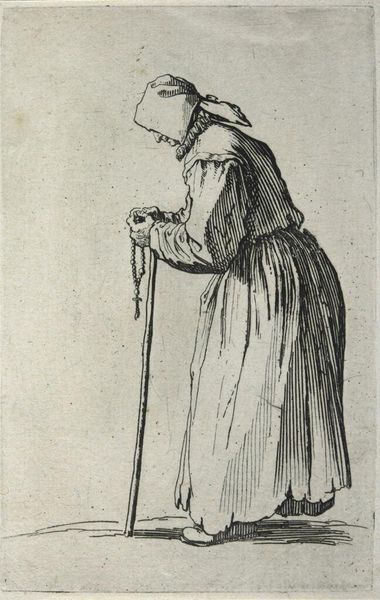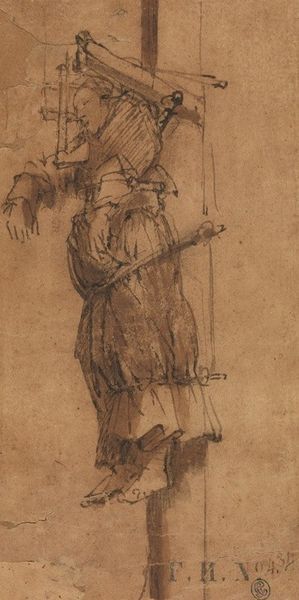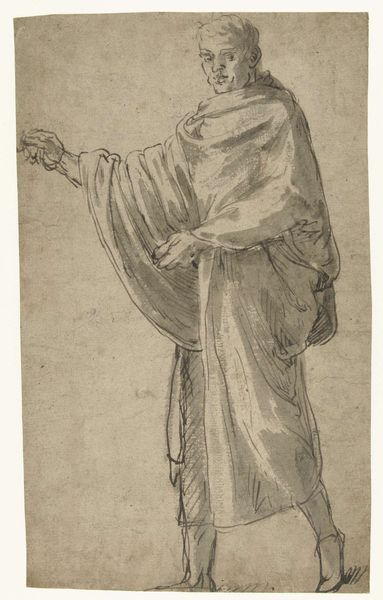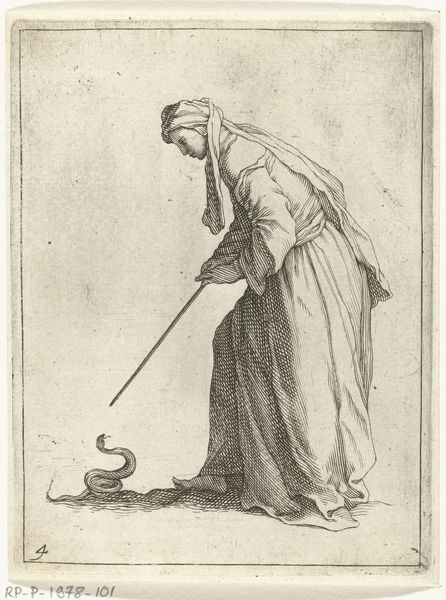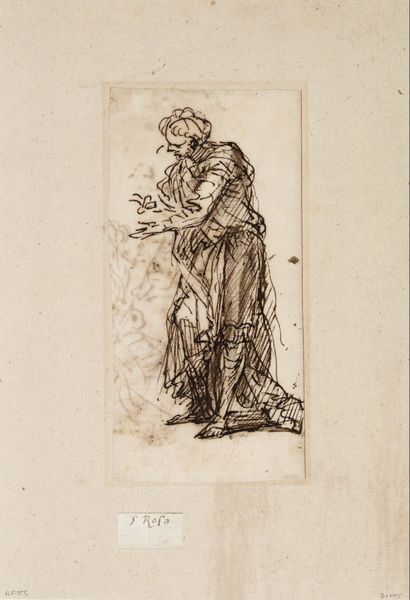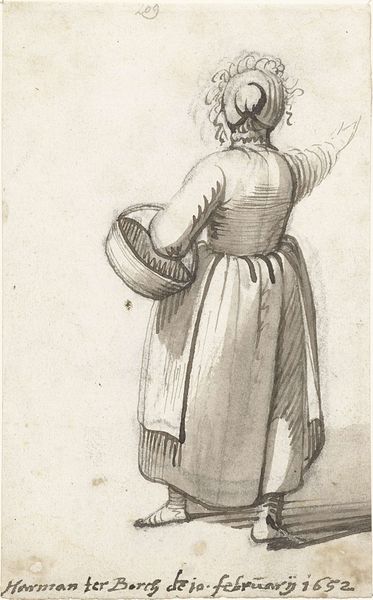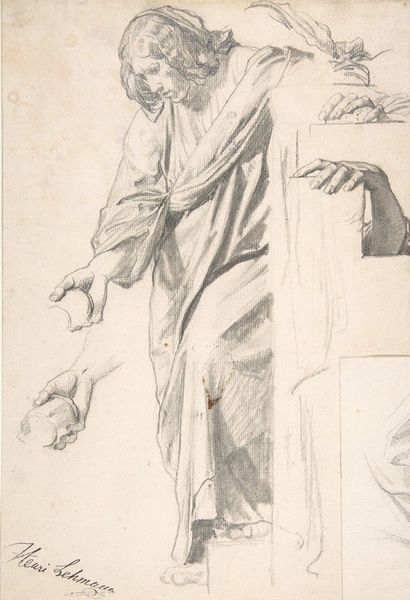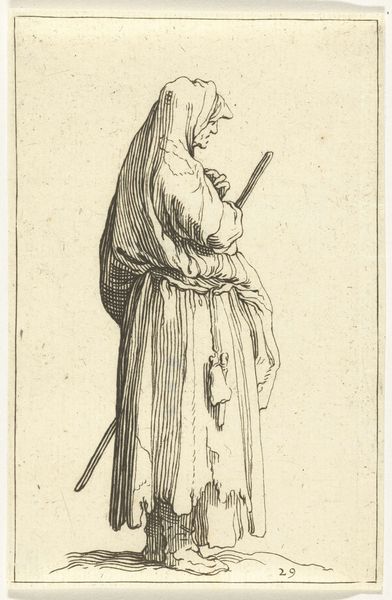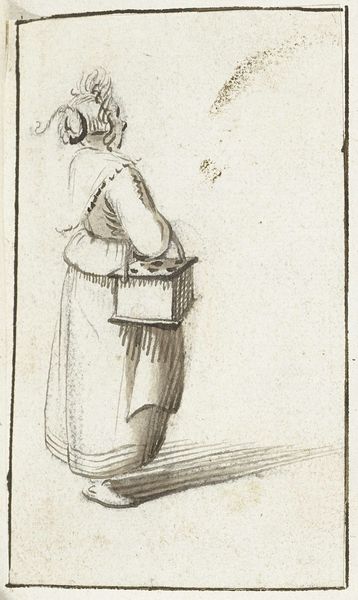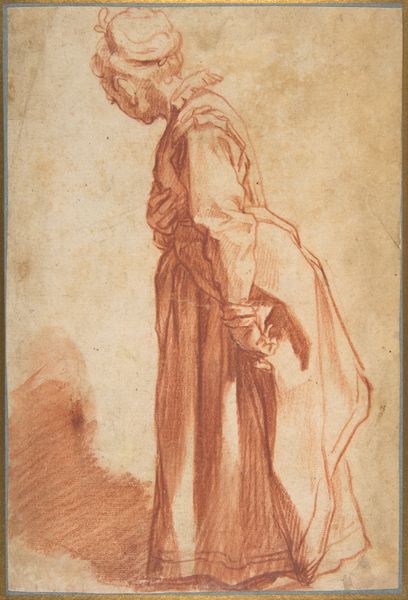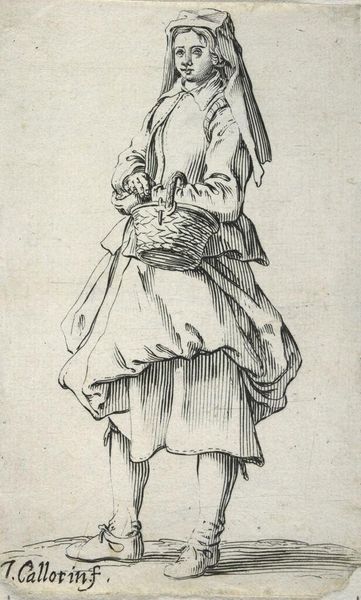
drawing, pencil
#
portrait
#
drawing
#
pencil sketch
#
pencil drawing
#
sketch
#
pencil
#
portrait drawing
#
pencil work
#
genre-painting
#
academic-art
#
realism
Dimensions: 30.5 x 19.1 cm
Copyright: Public domain
Curator: This is "Study for a Woman Feeding Chickens," a pencil drawing created around 1859 by Jean-François Millet. It’s currently held in a private collection. Editor: My immediate thought is how evocative it is, even unfinished. The sketched hands—almost ghostly—tell so much about the labor involved, the physicality of daily life for a woman of that time. Curator: Precisely. Millet’s work often explores the lives of rural laborers, but here, the study nature highlights the raw process. Notice the density of the pencil strokes suggesting the weight of her clothing, contrasted with the spare lines that define her features. The materials themselves speak to a life of economy, a world where resources were carefully husbanded. Editor: And isn’t the genre itself a conscious choice? Consider how paintings of peasants became popular around that period, almost as a means to glorify, and arguably pacify, this massive rural working class which by then was increasingly mobile. Curator: Absolutely. There’s a social context in viewing this in the broader frame of the art world. Millet's realism became almost a kind of political statement. He was rejecting romanticized depictions of rural life in favor of something grittier, something that acknowledged the sheer effort required. But the 'academic-art' influence keeps showing. Editor: The pose itself, her slightly bowed head, hints at both exhaustion and diligence. It becomes an emblem, doesn't it, of an entire social class rendered through simple strokes and inexpensive materials? We can easily assume it as work for commission, by private art galleries interested in portraying reality. Curator: And let's consider this study as preparation, a stage in his creative practice where ideas, process, material come together... Even this, can tell us so much about artistic process and production. Editor: It truly highlights the often-overlooked labor in the art-making process itself, even as it portrays another form of labor. I find the combination profoundly resonant. Curator: Indeed. It’s a poignant piece both for its subject and as a physical artifact of the art-making process itself, bridging worlds of labour and skill in its time.
Comments
No comments
Be the first to comment and join the conversation on the ultimate creative platform.
